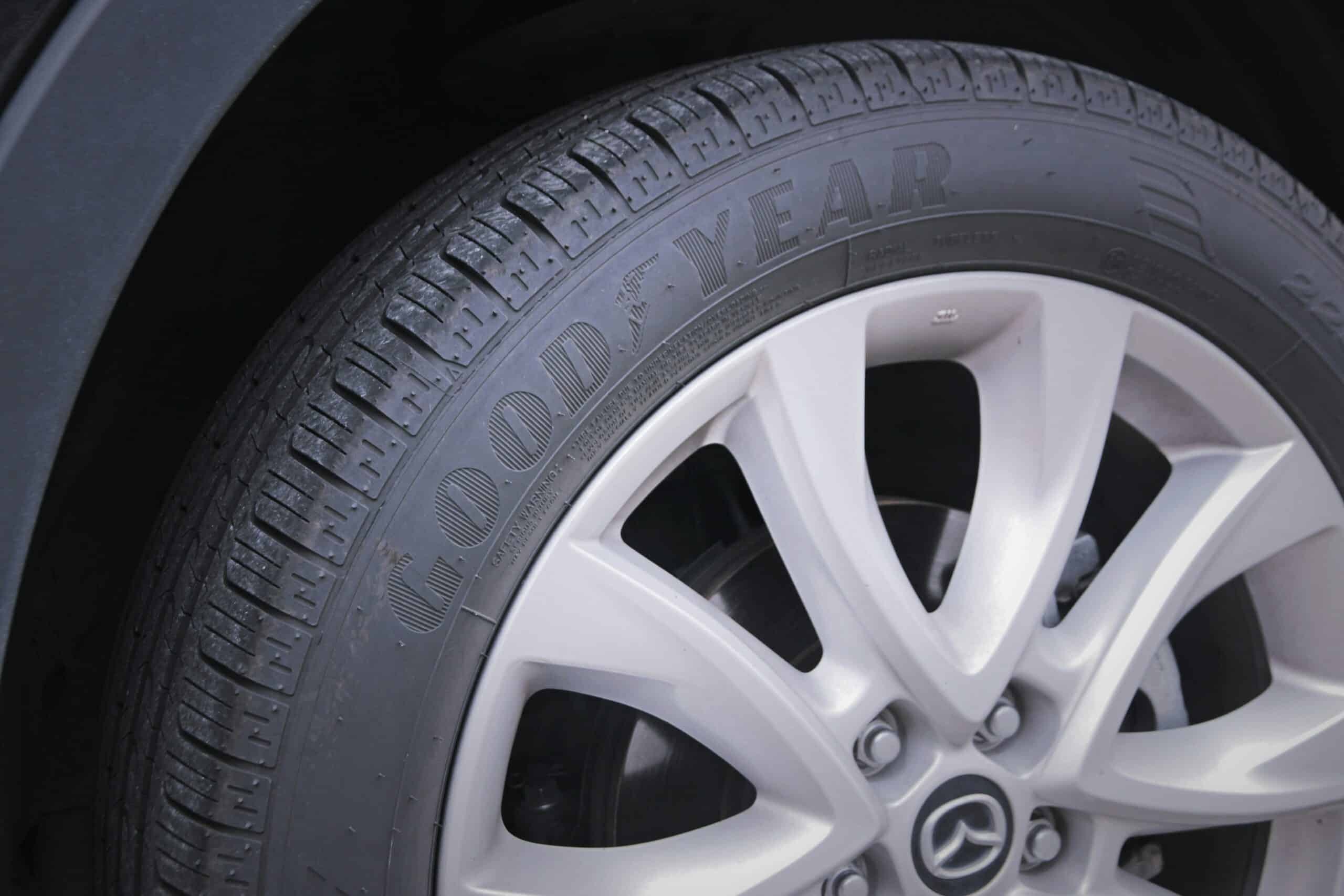
Photo by Tristan Beischel @Autoily.com on Unsplash
Goodyear’s Smart Tires Predict Disaster: New Tech Senses Rain and Ice
January 9, 2025
“Smart tires” will soon be on your new car. Tire giant Goodyear, alongside Netherlands-based research company TNO, is developing a tire with environmental sensors that detect slippery road conditions.
The smart tire sensors will interact with a vehicle’s driver-assist and automatic emergency braking (AEB) systems. When an obstacle in the road and unsafe conditions, such as ice or rain, are present, the sensors will tell the vehicle to start braking sooner.
“The AEB can be assertive way earlier,” explained Werner Happenhofer, vice president of tire intelligence and e-mobility solutions at Goodyear, per The Verge. “They say, oh well, wait a minute, my maximum deceleration potential is probably just half a G because of the lower friction potential. Hence the system would react way earlier if it spots a situation where a crash is imminent.”
Goodyear and TNO began collaborating on smart tire technology through the SightLine project in 2021. With advanced sensors, the tires can detect changes in their air pressure, determine friction between the tires and the road, and even when the rubber is too thin. The ability to warn a vehicle of slick road conditions and trigger emergency braking is just one more safety feature that will eventually be rolled out.
“The technology is available and it’s just an extension of some of the other work we’ve been doing for a few years now,” said Chris Helsel, Goodyear’s chief technology officer and vice president for global innovation.
Perfect Timing for Smart Tire Technology
Last year, the National Highway Traffic Safety Administration (NHTSA) finalized a rule requiring all car makers to install an AEB system as a standard feature on every vehicle. Starting in 2029, every light passenger vehicle (10,000 pounds or less) must have better automatic braking, which is projected to save 360 lives and prevent 24,000 injuries per year.
“Automatic emergency braking is proven to save lives and reduce serious injuries from frontal crashes, and this technology is now mature enough to require it in all new cars and light trucks,” said NHTSA Deputy Administrator Sophie Shulman.
While the technology is already standard on most vehicles, the NHTSA notes that AEB systems must be updated to adapt to higher vehicle speeds and react to unpredictable road hazards just as pedestrians and bicyclists. Additionally, the system must be capable of adjusting to low-light conditions, such as driving at night.
When Goodyear’s smart tires will be released is still to be determined. However, an early look at the tech was revealed at the 2025 Consumer Electronics Show in Las Vegas.
Recent News








